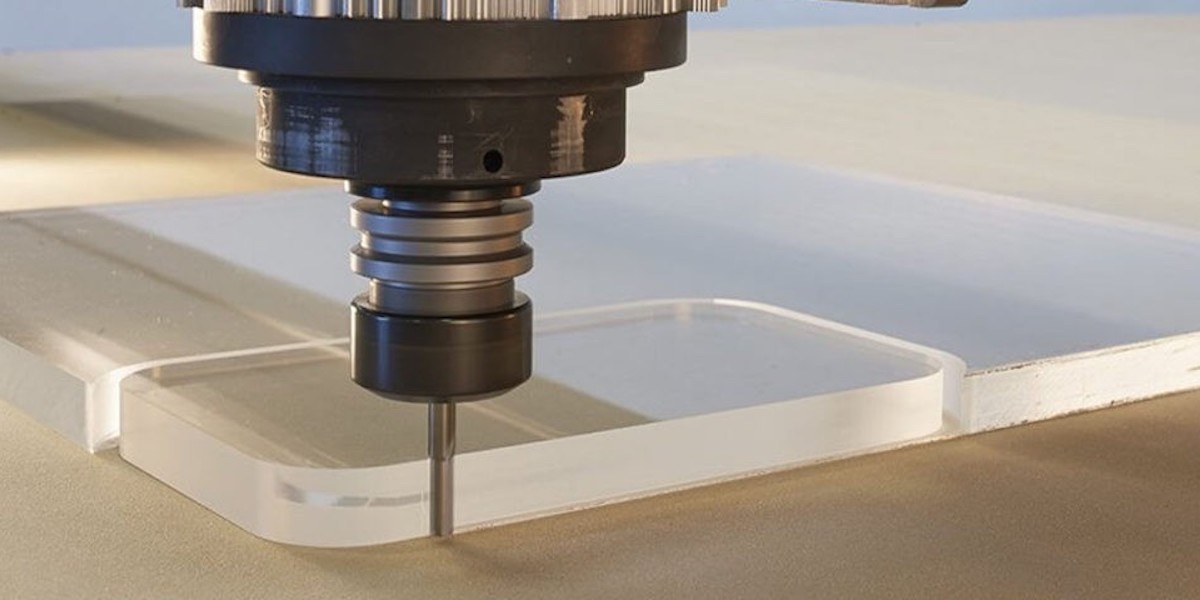At RALLY, we understand the complexities of acrylic machining. Our team of experts has years of experience working with acrylic, and we’re dedicated to sharing our knowledge to help you achieve the best results. From selecting the right tools to offering step-by-step guidance, RALLY is your trusted partner in acrylic machining. Our commitment to quality and precision ensures that you have the support and resources you need to excel in your projects.
By following this guide, you’ll gain a deeper understanding of acrylic machining and discover techniques that will elevate your work to professional standards.
Overview of Acrylic Machining
CNC Machining for custom metal parts leverages computer numerical control to operate machine tools with
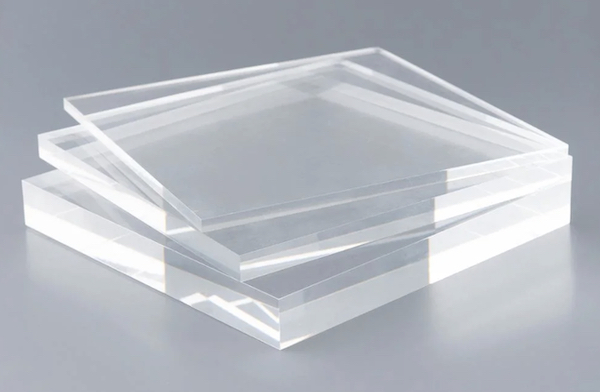
1. What is acrylic machining?
Acrylic machining involves cutting, drilling, milling, and finishing acrylic sheets and blocks to create a variety of products. This process requires precision and the right set of tools to ensure the acrylic does not crack, chip, or melt during machining. Unlike other materials, acrylic demands a specific approach to achieve a smooth, polished finish that highlights its clarity and aesthetic appeal.
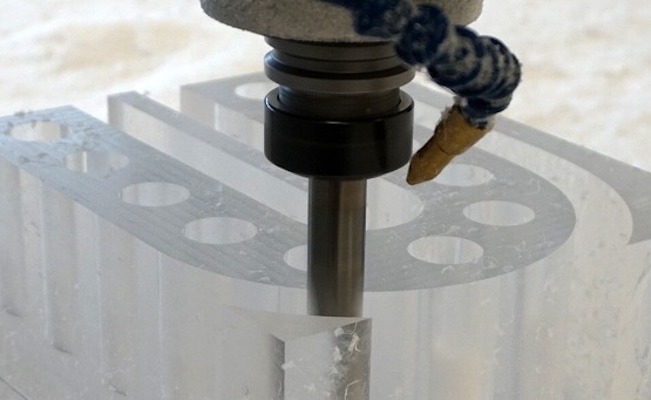
2. Importance and Benefits
Why is acrylic machining so important? For starters, acrylic is widely used in various industries due to its strength, durability, and visual appeal. It’s lighter than glass but offers similar transparency, making it ideal for applications ranging from signage to protective barriers. Moreover, well-machined acrylic parts enhance the final product’s quality, ensuring it meets both functional and aesthetic standards.
The benefits of mastering acrylic machining are numerous. You can create custom, high-quality acrylic components that stand out for their clarity and precision. Proper machining techniques also reduce waste and save costs by minimizing material damage. Additionally, having the skill to machine acrylic opens up a world of creative possibilities, allowing you to bring intricate designs to life with ease.
Understanding Acrylic Material
Whether you’re a hobbyist, a professional craftsman, or an industrial designer, you likely recognize the importance of choosing the right material for your projects. Acrylic, often referred to as plexiglass, stands out as a top choice for various applications, thanks to its unique properties. But what makes acrylic so special? Let’s dive into the essential attributes of this remarkable material and see how it compares to other options.
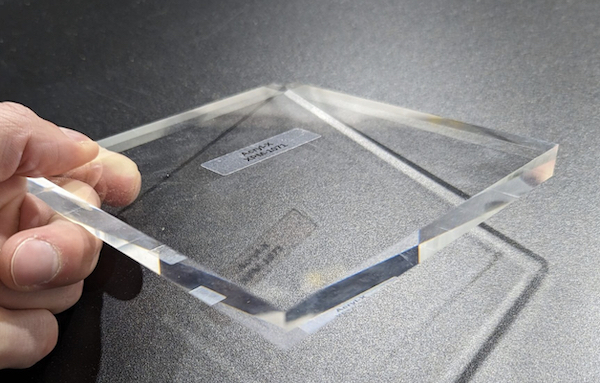
1. Properties of Acrylic
Strength and Durability:
Acrylic is renowned for its impressive strength and durability. Unlike glass, which is prone to shattering, acrylic is impact-resistant, making it an ideal choice for environments where safety is a concern. It can withstand significant stress and pressure without breaking, ensuring longevity and reliability in your projects. Imagine crafting a product that retains its integrity and appearance over years of use – that’s the promise of acrylic.
Transparency and Aesthetic Appeal:
One of the most celebrated features of acrylic is its exceptional clarity. It transmits light with a clarity that rivals glass, making it perfect for applications where visual appeal is paramount. Whether you’re designing display cases, signage, or decorative items, acrylic offers a crystal-clear finish that enhances the overall aesthetic. Think of the elegant, sleek look you can achieve with acrylic – it’s truly a designer’s dream material.
2. Comparison with Other Materials
Acrylic vs. Glass:
When comparing acrylic to glass, several advantages come to light. Acrylic is significantly lighter, making it easier to handle and install, especially in large pieces. It’s also much more resistant to breakage, which means it’s safer and more durable in high-traffic areas or in situations where impact is a concern. While glass offers a traditional appeal, acrylic provides modern versatility without compromising on aesthetics.
Acrylic vs. Polycarbonate:
Polycarbonate is another popular material, known for its high impact resistance. However, acrylic often outshines polycarbonate in terms of optical clarity and UV resistance. While polycarbonate may be the go-to for extremely high-stress applications, acrylic offers a better balance of strength, clarity, and cost-effectiveness for most projects. Plus, acrylic is easier to machine, making it the preferred choice for intricate designs and detailed wor
3. Why Acrylic for Machining?
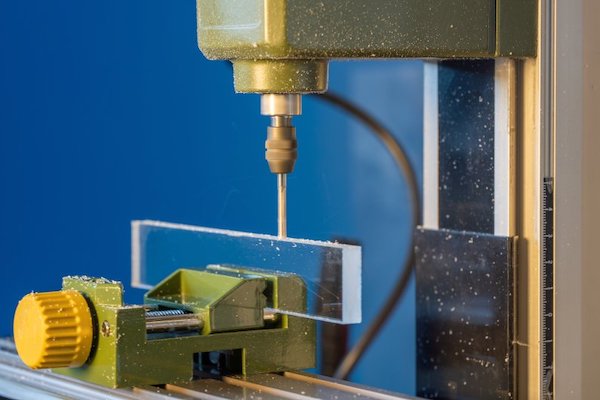
Ease of Machining:
Acrylic’s composition allows for smooth, precise machining. It can be easily cut, drilled, and polished to achieve the desired shape and finish. This ease of machining means less time spent on post-processing and more time enjoying the final product. Whether you’re creating complex parts or simple shapes, acrylic’s machinability is a significant advantage. Picture yourself effortlessly shaping acrylic into the perfect form – that’s the kind of efficiency you can expect.
Versatility in Applications:
Acrylic’s versatility is unmatched. It’s used in a wide range of industries, from automotive and aerospace to retail and interior design. Its ability to be molded, cut, and colored makes it suitable for a variety of applications, including window panels, light fixtures, and decorative items. The possibilities are endless with acrylic, allowing you to explore new creative avenues and innovative solutions for your projects. Imagine the creative freedom that comes with such a versatile material – that’s the power of acrylic.
Now that you’ve seen the remarkable properties and advantages of acrylic, think about how it can elevate your next project. Are you looking for a material that combines strength, clarity, and versatility? Do you want to create products that are not only functional but also visually stunning? Acrylic might just be the perfect choice for you. At RALLY, we’re here to guide you through every step of your acrylic machining journey, ensuring you achieve outstanding results with every project.
Challenges in PEEK CNC Machining
If you’re embarking on an acrylic machining project, having the right tools at your disposal is crucial. Without the proper equipment, achieving precision and quality in your work can be challenging. But with the right tools, you can transform acrylic into beautiful, functional pieces that stand out. Let’s explore the essential tools you’ll need for acrylic machining and how they can make a significant difference in your projects.
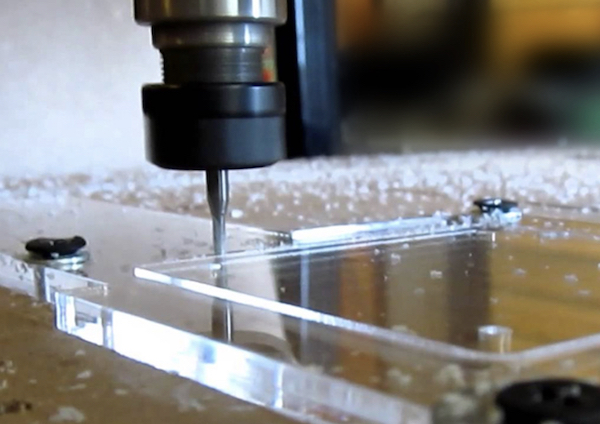
1. CNC Machines
Types of CNC Machines Suitable for Acrylic:
When it comes to acrylic machining, CNC (Computer Numerical Control) machines are indispensable. These machines allow for precise control and repeatability, which is essential for achieving high-quality results. Various types of CNC machines are suitable for acrylic, including CNC routers and CNC milling machines. CNC routers are excellent for cutting and shaping, while CNC milling machines are ideal for more intricate work and detailed designs. Imagine the level of detail and precision you can achieve with a CNC machine tailored for acrylic – it’s a game-changer.
Features to Look For:
Not all CNC machines are created equal, especially when it comes to machining acrylic. Look for machines that offer high spindle speeds, as acrylic requires faster cutting to prevent melting and achieve smooth edges. Additionally, features like vacuum tables to hold the acrylic in place and dust collection systems to manage debris are essential. A machine with these features ensures a clean, efficient, and precise machining process. Picture yourself working with a machine that effortlessly handles acrylic, producing flawless cuts every time – that’s the power of the right CNC machine.
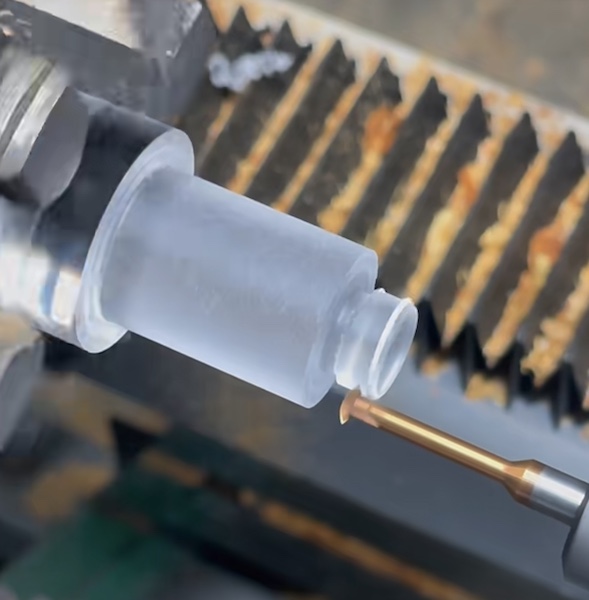
2. Cutting Tools
Types of Cutting Tools:
The cutting tools you choose are just as important as the CNC machine itself. For acrylic, end mills and routers are the most commonly used tools. End mills are perfect for creating detailed cuts and smooth edges, while routers are excellent for shaping and contouring. Both tools need to be made from materials that can withstand high speeds and maintain sharpness, such as carbide or diamond-tipped tools. Imagine the satisfaction of making precise, clean cuts with tools specifically designed for acrylic – it’s the kind of precision that sets your work apart.
Importance of Sharp Tools:
Using sharp cutting tools is vital for achieving a high-quality finish on acrylic. Dull tools can cause chipping, cracking, and poor edge quality, which can ruin your project. Sharp tools, on the other hand, cut through acrylic cleanly and efficiently, minimizing the risk of damage. Regularly sharpening or replacing your cutting tools ensures that you maintain the best possible results. Think of the frustration of dealing with poor cuts and rough edges, and then imagine the ease and quality that come with using sharp, well-maintained tools – it’s a difference you can see and feel.
Techniques and Best Practices
Whether you’re a seasoned professional or a hobbyist, mastering the right techniques and best practices is essential for achieving exceptional results in acrylic machining. The right approach can make the difference between a flawless finish and a project fraught with issues. Let’s explore the key techniques for cutting, drilling, milling, and polishing acrylic, and discover how these practices can transform your work.
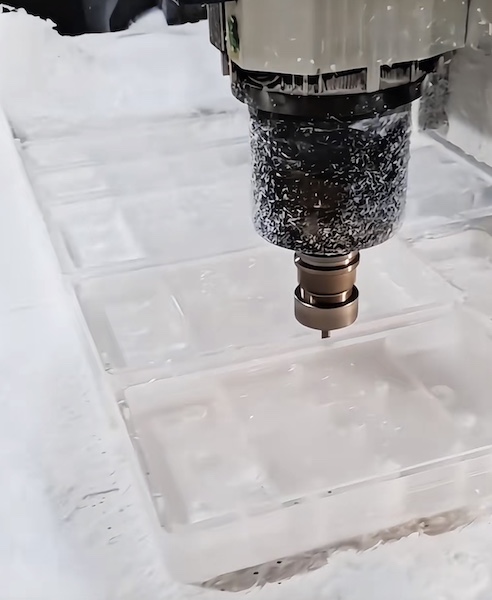
1. Cutting Techniques
Laser Cutting vs. Traditional Cutting:
When it comes to cutting acrylic, there are two main methods: laser cutting and traditional cutting. Laser cutting uses a focused beam of light to precisely cut through the acrylic, providing incredibly clean and smooth edges. It’s ideal for intricate designs and detailed work.
On the other hand, traditional cutting methods, such as using a saw or CNC router, involve mechanical means to cut through the material. While traditional cutting can be effective, it often requires more post-processing to achieve a smooth finish. Imagine the precision and efficiency of using laser cutting for your acrylic projects – it’s a game-changer in terms of quality and detail.
Tips for Clean Cuts:
Achieving clean cuts in acrylic requires attention to detail and the right techniques. Whether you’re using laser or traditional cutting methods, ensuring the acrylic is properly secured and using sharp, appropriate tools is key. For traditional cutting, use a fine-toothed saw blade designed for plastic to minimize chipping. When laser cutting, adjust the power and speed settings to avoid melting the edges. Always perform a test cut to fine-tune your settings. Picture yourself making clean, precise cuts every time, without the frustration of rough edges or chips – that’s the power of mastering cutting techniques.
2. Drilling and Milling
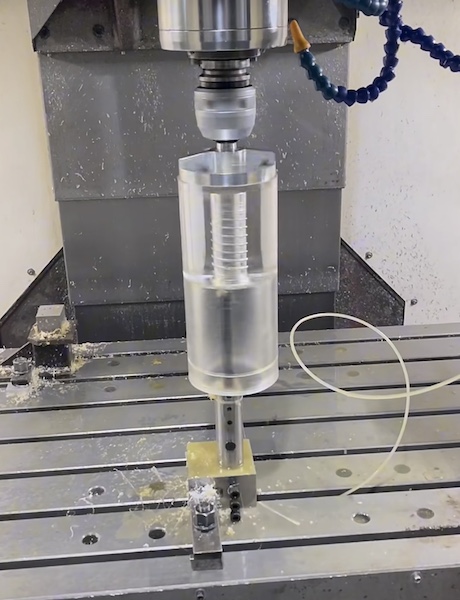
Best Practices for Drilling:
Drilling acrylic can be tricky, as the material tends to crack or chip if not handled correctly. To prevent these issues, use a drill bit specifically designed for acrylic or plastic, which has a different tip geometry compared to regular metal drill bits. Start with a slow drilling speed and gradually increase it to avoid overheating.
Use a backing material to support the acrylic and reduce the risk of cracking. Imagine drilling perfect holes every time, without the worry of damaging your material – it’s all about using the right technique and tools.
How to Avoid Cracking:
Cracking is a common issue when machining acrylic, but it can be avoided with careful handling and the right approach. Always use sharp tools and avoid applying too much pressure. When drilling or milling, make incremental passes rather than trying to remove too much material at once.
Keeping the acrylic cool by using a coolant or air blast can also prevent cracks. Picture yourself working on a project without the fear of cracks ruining your work – it’s about precision and patience, and you’ve got it covered.
3. Polishing and Finishing
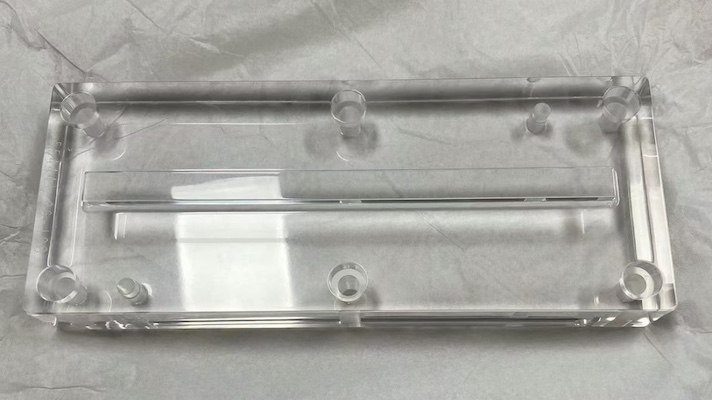
Methods for Achieving a Clear, Polished Finish:
Polishing acrylic is the final step that brings out its full potential, giving it a glass-like clarity. There are several methods to achieve a polished finish, including flame polishing, buffing, and using polishing compounds. Flame polishing involves passing a flame quickly over the edges to smooth them out, but it requires practice to avoid melting the material.
Buffing with a soft cloth and polishing compound can achieve a similar result with more control. Imagine transforming your acrylic pieces into beautifully polished, professional-looking items – it’s the finishing touch that makes all the difference.
Tools and Materials for Polishing:
To polish acrylic effectively, you’ll need the right tools and materials. A buffing wheel attached to a rotary tool or bench grinder is excellent for larger pieces. For smaller projects, hand polishing with microfiber cloths and specialized acrylic polishing compounds works well.
Sanding the acrylic with progressively finer grits before polishing can also help achieve a smoother finish. Picture the satisfaction of seeing your acrylic creations gleam with a clear, polished finish – it’s the result of using the right tools and techniques.
Applications of Acrylic Machining
Whether you’re a DIY enthusiast or a seasoned professional, acrylic machining can present a variety of challenges. From preventing cracks and chips to maintaining precision and managing heat, each step requires careful attention to detail. However, with the right techniques and solutions, you can overcome these obstacles and achieve high-quality results. Let’s explore some common challenges in acrylic machining and discover effective strategies to tackle them.
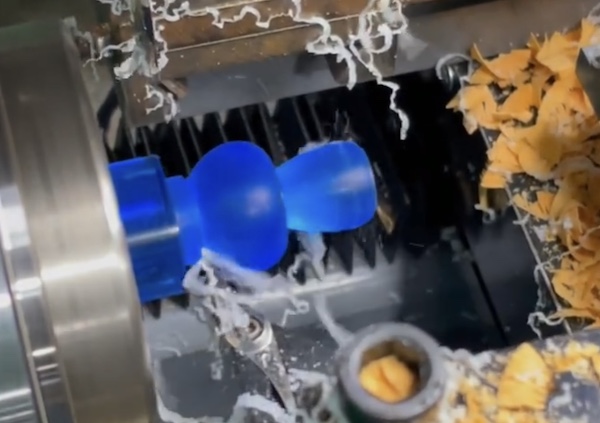
1. Preventing Cracks and Chips
Causes of Cracks and Chips:
One of the most frustrating issues when working with acrylic is the occurrence of cracks and chips. These imperfections can occur due to various reasons, such as using the wrong tools, applying too much pressure, or working at incorrect speeds. Acrylic is a brittle material, and improper handling can easily lead to damage. Imagine the disappointment of seeing a crack ruin your carefully crafted piece – it’s a challenge many face, but it’s not insurmountable.
Techniques to Prevent Them:
Preventing cracks and chips starts with using the right tools and techniques. Ensure that you use sharp, carbide-tipped tools designed specifically for acrylic. When cutting, drilling, or milling, work at slower speeds and apply steady, even pressure. Using a lubricant or coolant can also help reduce friction and heat buildup, minimizing the risk of cracks. Supporting the acrylic with a backing material during drilling can prevent cracking as well. Picture yourself working confidently, knowing that your techniques will keep your acrylic intact – it’s a game-changer for your projects.
2. Maintaining Precision
Importance of Precision in Acrylic Machining:
Precision is crucial in acrylic machining, as even the smallest error can lead to poor fit, function, or appearance. Whether you’re creating intricate designs or simple shapes, maintaining accuracy ensures that your final product meets your specifications and looks professional. Think about the pride you’ll feel when your work fits perfectly and looks flawless – precision makes all the difference.
Tools and Methods to Ensure Accuracy:
Achieving precision requires the right tools and methods. Use high-quality CNC machines with fine control settings to ensure accurate cuts and shapes. Measuring tools like calipers and micrometers can help you check dimensions and tolerances during and after machining.
Regularly calibrating your equipment ensures consistent accuracy. Additionally, using jigs and fixtures can help hold your acrylic in place, reducing movement and errors during machining. Imagine the satisfaction of completing a project with exact measurements and a perfect finish – it’s possible with the right approach.
3. Dealing with Heat and Melting
How to Manage Heat During Machining:
Heat is a common issue in acrylic machining, as excessive heat can cause the material to melt or warp. This not only affects the appearance of your piece but can also compromise its structural integrity. Managing heat effectively is crucial to maintaining the quality of your work. Imagine the frustration of seeing your project melt or deform due to uncontrolled heat – it’s a challenge that can be managed with the right techniques.
Tips to Avoid Melting:
To avoid melting, use sharp tools and ensure they are suitable for high-speed machining. Work at moderate speeds to reduce friction and heat buildup. Applying a coolant or using an air blower can help dissipate heat during cutting, drilling, and milling. Keeping the work area clean and free of debris also helps maintain a cooler environment. Additionally, consider using a vacuum table to hold the acrylic down without applying excessive force, which can generate heat. Picture yourself completing your machining process with perfectly cut and shaped acrylic, free from any melting or warping issues – it’s achievable with these tips.
Common Challenges and Solutions
1. Industries Utilizing Acrylic
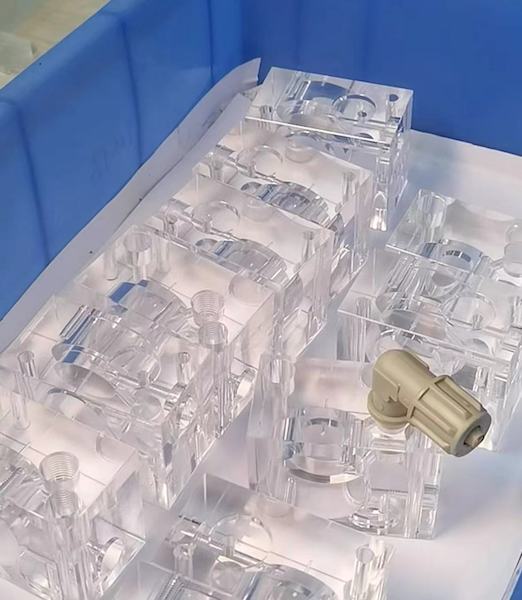
Automotive:
In the automotive industry, precision and durability are paramount. Acrylic is used extensively for its lightweight and robust nature. It’s employed in manufacturing light covers, interior panels, and even as an alternative to glass for windows and windshields.
Acrylic’s impact resistance and clarity make it perfect for these applications. Imagine the sleek, polished look of a car with acrylic components that not only enhance aesthetics but also improve performance – it’s a testament to acrylic’s utility in the automotive sector.
Aerospace:
The aerospace industry demands materials that are both strong and lightweight. Acrylic fits this bill perfectly. It is used for aircraft windows, cockpit canopies, and instrument panels. Its clarity and resistance to UV rays make it ideal for maintaining visibility and durability in harsh conditions.
Picture an aircraft soaring through the skies with clear, resilient acrylic components ensuring safety and performance – it’s a critical application of acrylic machining that underscores its importance in aerospace.
Signage and Displays:
Acrylic is a staple in the signage and display industry due to its clarity, ease of machining, and ability to be colored or frosted. From vibrant store signs to intricate exhibition displays, acrylic provides the perfect medium for creating eye-catching visuals.
It can be laser-cut into detailed shapes and polished to a glass-like finish, making it highly attractive for advertising and informational displays. Imagine walking through a mall and seeing striking, clear, and colorful signs and displays that capture your attention – that’s the impact of acrylic in signage and displays.
2. Specific Applications
Custom Acrylic Parts:
One of the most exciting aspects of acrylic machining is the ability to create custom parts tailored to specific needs. Whether it’s a unique component for a piece of machinery or a bespoke part for a hobby project, acrylic’s machinability allows for high precision and customizability.
Think about the freedom to design and produce exactly what you need, with the durability and clarity of acrylic – it’s a game-changer for custom manufacturing.
Prototypes and Models:
In the realm of prototyping, acrylic is invaluable. Its ease of machining allows for quick and accurate creation of prototypes and models. Designers and engineers use acrylic to test and refine their concepts before full-scale production.
Acrylic models provide a clear view of the internal structures and design features, aiding in the development process. Picture the satisfaction of turning a concept into a tangible prototype that can be examined and tested thoroughly – it’s an essential step in innovation made easier with acrylic.
Decorative Items:
Beyond industrial uses, acrylic is also popular in the creation of decorative items. Its versatility and aesthetic appeal make it ideal for crafting everything from modern furniture pieces to artistic sculptures.
Acrylic can be shaped, colored, and polished to create stunning decorative items that add elegance to any space. Imagine a beautifully designed acrylic lamp or a sleek, modern coffee table that becomes the centerpiece of a room – it’s the artistic potential of acrylic machining that brings beauty and functionality together.
Conclusion
In conclusion, acrylic machining offers unparalleled versatility and precision, making it an ideal choice for a wide range of applications across various industries. By mastering the techniques and best practices outlined in this guide, you can achieve exceptional results in your acrylic projects. At RALLY, we are dedicated to providing the tools, resources, and expertise you need to excel in acrylic machining.
Ready to take your acrylic machining skills to the next level? Explore our comprehensive range of products and services, and let RALLY help you achieve your project goals. Visit our website today to learn more and get started!
FAQs
What is acrylic machining?
How do you prevent acrylic from cracking during machining?
What are the best tools for cutting acrylic?
How can I achieve a polished finish on acrylic?
What industries commonly use acrylic machining?
Why choose RALLY for acrylic machining services?
Work with RALLY for CNC Machining Parts
Request a quote for new project today! No minimum order quantity and free samples available!

